A “Curious Organ” – The Gallbladder 2
The gallbladder is a pear-shaped organ that is part of the biliary system. It is located in the upper right quadrant of the abdomen and sits directly beneath the right lobe of the liver. The gallbladder can appear, on average, 8cm in length and 4cm in diameter when filled with bile, and can store roughly 35-50ml of bile when full. The gallbladder stores bile produced by the liver. When the body senses the presence of fat in the digestive tract, a hormone called cholecystokinin is released from the small intestine and signals the gallbladder to discharge the bile into the duodenum in order to assist with fat digestion. Bile emulsifies fat, breaking it down into smaller globules in order to increase surface area. This allows other enzymes, mainly from the pancreas, to digest the fat more easily.
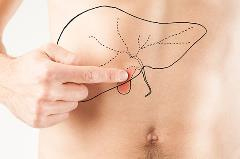 According to Oriental Medicine (OM), the gallbladder is considered both a fu (yang / bowel) organ as well as an extraordinary or curious organ. It has characteristics of both a zang (yin) organ and a fu (yang) organ. Its hollow structure makes it resemble other yang organs. But unlike other fu, the gallbladder is never directly in contact with the exterior or with food or waste. Functionally, it resembles a yin organ, storing a pure fluid (bile); yet it is unlike the other zang in that it does not itself produce a pure fluid. The gallbladder is interiorly-exteriorly paired with the liver, and the logic of this pairing is as easy to see as with the kidney and the urinary bladder. But unlike the urinary bladder, which receives waste material from the kidney to be discharged to the exterior, the gallbladder receives only pure fluid from its yin organ. Being the only yang organ that does not transport impure substances, it is thus also classified as a “curious organ.”
According to Oriental Medicine (OM), the gallbladder is considered both a fu (yang / bowel) organ as well as an extraordinary or curious organ. It has characteristics of both a zang (yin) organ and a fu (yang) organ. Its hollow structure makes it resemble other yang organs. But unlike other fu, the gallbladder is never directly in contact with the exterior or with food or waste. Functionally, it resembles a yin organ, storing a pure fluid (bile); yet it is unlike the other zang in that it does not itself produce a pure fluid. The gallbladder is interiorly-exteriorly paired with the liver, and the logic of this pairing is as easy to see as with the kidney and the urinary bladder. But unlike the urinary bladder, which receives waste material from the kidney to be discharged to the exterior, the gallbladder receives only pure fluid from its yin organ. Being the only yang organ that does not transport impure substances, it is thus also classified as a “curious organ.”
The gallbladder is also seen as a pivot, a turning point for new beginnings and new stages of life. This pivot, or hinge, is discussed in the Su Wen, chapter 9. The shaoyang stage is the turning place, alternating between heat and cold; and the hinge between the exterior of the body and the interior. The gallbladder is between zang and fu, between yin and yang. It is yin as it receives and stores the bile from the liver, and yang as it releases bile into the duodenum.
FUNCTIONS OF THE GALLBLADDER IN OM
The main function of the gallbladder is to store bile produced by the liver. This primary function is the same as defined by Western medicine and as previously discussed. Bile, known as the “central essence,” is important to the body. In the Nan Jing, chapter 49, it states that bile is full of essences and when it leaves the gallbladder it does not leave the body. In fact, modern medicine has determined that 95% of the bile gets reabsorbed in the ileum.
 The gallbladder has its own unique mental activities and emotional characteristics associated with it. It is commonly stated that the gallbladder is responsible for decision making, judgment, and courage. As stated in the Su Wen, chapter 8, “the gallbladder is responsible for what is exact and just; determination and decision stem from it.” This is more than just making good decisions. It is the behavior within your environment and making the just and appropriate decisions in relation. It is about an individual connecting to guiding principles that they can observe and live by, and about using those principles to make good life decisions. The gallbladder also provides courage and initiative in making decisions. When the gallbladder is deficient, a lack of courage, lack of initiative, and lack of assertiveness are seen. This is often accompanied with timidity and poor self-image. This lack of courage is not necessarily a form of cowardice; rather it is seen as not being forthcoming about feelings, opinions, and emotions. The gallbladder, as a pivot, can also be seen as the hesitation between courage and fear.
The gallbladder has its own unique mental activities and emotional characteristics associated with it. It is commonly stated that the gallbladder is responsible for decision making, judgment, and courage. As stated in the Su Wen, chapter 8, “the gallbladder is responsible for what is exact and just; determination and decision stem from it.” This is more than just making good decisions. It is the behavior within your environment and making the just and appropriate decisions in relation. It is about an individual connecting to guiding principles that they can observe and live by, and about using those principles to make good life decisions. The gallbladder also provides courage and initiative in making decisions. When the gallbladder is deficient, a lack of courage, lack of initiative, and lack of assertiveness are seen. This is often accompanied with timidity and poor self-image. This lack of courage is not necessarily a form of cowardice; rather it is seen as not being forthcoming about feelings, opinions, and emotions. The gallbladder, as a pivot, can also be seen as the hesitation between courage and fear.
Being easily startled and a general feeling of fear, especially in regards to decision-making, are also emotions of the gallbladder and associated with gallbladder insufficiency; specifically, being fearful and prone to panic about choices or outcomes of choices. The gallbladder is an emotionally charged organ and can easily be affected by events or the surrounding environment. A quick return to normal after a sudden physical or emotional shock represents a strong gallbladder.
When the gallbladder is in balance, it is able to provide an anchor, a base, for the process of deliberation. Decisions made with a strong gallbladder are clear and decisive, thought is acute and focused, and action is accurate and resolute. The gallbladder is able to maintain sound judgment when confronted with adverse situations or conditions. When the gallbladder is deficient, indecision, procrastination, hesitation, and timidity will prevail. When the gallbladder is in excess, anger and impulsiveness will be manifest. Other characteristics of excess gallbladder include holding on to resentment and making rash decisions. The gallbladder also shares similar emotional characteristics/disharmonies as the liver, such as irritability or being easily angered. Anger is impulsive, like an initial first movement, which is associated with the gallbladder. Anger is about the need to create space quickly. When we feel a loss of control, we need some space to be able to evaluate the situation in order to make a decision.
The gallbladder usually involves short-term decisions, but with a clear understanding of the impact the immediate decision will have upon the long-term plan. When there is imbalance, an individual can become overly concerned with small details and lose sight of the big picture.
The gallbladder has close relationships with the other organs. All organs follow the gallbladder. The Su Wen states in chapter 9 that “the eleven depots (zang-fu) receive decisions from the gallbladder” If the gallbladder qi is correct and righteous at the beginning of all moments of decision, the other organs follow its directional movement forward.
Liver and gallbladder are closely related, so much so that it can be difficult to separate their functions and disharmonies, like the commonly seen OM pattern of liver/gallbladder damp-heat. The liver, known as “the general,” creates thoughts and ideas; it plans and strategizes. The gallbladder, “the general’s advisor,” implements the liver’s plans and oversees their execution. If the gallbladder is in disharmony it affects the liver and vice versa. This internal/external pairing shares a close physical proximity and their interactions are easily viewed by the movement of bile through the body. The bile that the liver produces is a powerful antioxidant that helps to detoxify the liver. The liver then releases the bile, which goes to the gallbladder for storage to be used later in the digestion process. The gallbladder is the link between the liver and digestion (spleen/stomach). When the liver qi flows smoothly and easily, bile is produced and excreted regularly, ensuring optimal digestion. When the liver stagnates, bile production is impaired, resulting in middle burner disharmonies like acid reflux, abdominal distention and bloating, belching, bad breath, flatulence, indigestion, constipation, vomiting, etcetera.
The gallbladder and heart share a close connection. The gallbladder’s decisiveness helps the heart to control the mind. It helps guide the shen and provides direction for it. The shen resides in the blood; and during the day the heart is where most of the blood activity resides, but at night, the blood comes to the liver and to the hun. The gallbladder helps lead the shen in this process. There are several different ways of looking at the connection between the heart and gallbladder in Oriental Medicine. From a five element, mother-son perspective, the gallbladder (wood) supports heart (fire). The gallbladder divergent channel travels to the heart. The heart and gallbladder are also clock opposites with gallbladder being the weakest at 11am-1pm during heart time, and vice versa. They also share common OM patterns like heart gallbladder qi deficiency and heart gallbladder phlegm-heat. Along with these patterns are shared pathological symptoms like bitter taste, which is often associated with heart fire, but is also a sign of a gallbladder disorder, and may be an indicator of a gallbladder and heart interrelated pattern. All these principles and theories can be used in treatment, whether you are supplementing the heart to treat gallbladder deficiency (presenting with timidity and fear,) or treating the gallbladder to address shen issues manifesting as phlegm misting the orifices with the classical gallbladder formula, Poria and Bamboo Formula (Wen Dan Tang).
The kidney controls will and determination. A decisive gallbladder with its initiative and movement to push forward helps the kidney to create action. The kidney produces marrow and rules the bones, but in the Ling Shu, chapter 10, it states: “In cases of bone disease, we must needle points on the gallbladder.”
Another function of the gallbladder is to control the sinews. This function works in conjunction with the liver. The liver’s role in sinew management is to nourish them with liver blood. It is the gallbladder’s qi that supports the sinews with the energy for proper movement and control.
 The gallbladder also helps with muscular strength and vitality. This is seen by the gallbladder’s ability to work with the liver to clear toxins from the body. These toxins are just physiological byproducts of the sinews and organs that build up in the body throughout the day and are deposited in the blood. At night, the gallbladder pulls blood away from the sinews and into the liver. If the gallbladder is not relaxed by 11pm, it cannot perform this function efficiently and the liver will be unable to properly detoxify and cleanse the blood during liver time (from 1am- 3am). If sleep is poor, then muscle aches, pains, and fatigue will set in. For full functioning of this process one should go to sleep by around 10pm.
The gallbladder also helps with muscular strength and vitality. This is seen by the gallbladder’s ability to work with the liver to clear toxins from the body. These toxins are just physiological byproducts of the sinews and organs that build up in the body throughout the day and are deposited in the blood. At night, the gallbladder pulls blood away from the sinews and into the liver. If the gallbladder is not relaxed by 11pm, it cannot perform this function efficiently and the liver will be unable to properly detoxify and cleanse the blood during liver time (from 1am- 3am). If sleep is poor, then muscle aches, pains, and fatigue will set in. For full functioning of this process one should go to sleep by around 10pm.
Pain and disease associated with gallbladder pathology in the body will often have associated signs and symptoms along the trajectory of the gallbladder meridian, the longest meridian in the body running along the side of the head, down the side of the body, ribcage, legs, and ending at the fourth toe. Common symptoms include eye problems like painful, itchy, red eyes, blurry vision, or yellow eyes, headaches, dizziness or vertigo, ear problems like poor hearing or pain, chest and lateral rib pain or flank pain, hip pain, pain or rigidity on sides of legs, etcetera. Pain can be more common on the right side of the body.
The gallbladder is the connection between the zang-fu and the curious organs. The gallbladder meridian allows us to access the other curious organs. It is the only yang organ to wrap around the genitalia, connecting with the uterus. It connects with the brain via GB20 and connects with the bone and marrow at GB39.
GALLBLADDER PATTERNS AND PATHOLOGIES
Gallbladder disharmonies are often included and/or overlap with liver disharmonies. Patterns of disharmony for the gallbladder include gallbladder qi deficiency, gallbladder excess heat, gallbladder damp-heat, and gallbladder stagnation with phlegm accumulation.
Gallbladder qi deficiency is sometimes referred to as gallbladder deficiency cold. Its chief symptom is the inability to make decisions. It may also present as fearfulness or being easily startled, blurry vision, floaters, dizziness, frequent sighing, restless sleep, irritability, poor hearing or tinnitus, flank pain, lassitude, and diarrhea. The tongue will be pale with a thin, white coat. The pulse will be weak or thin and slow. For gallbladder qi deficiency herbal support, use general qi tonics as well as herbs that calm shen and nourish kidney. Formula suggestions include using Ginseng Nourishing Formula (Ren Shen Yang Ying Wan) as the chief formula combined with Poria and Bamboo Formula (Wen Dan Tang) as the assistant.
The main symptoms for gallbladder heat include dizziness, tinnitus, headache on the sides of the head, dry throat, bitter taste, eye pain, hypochondriac pain, irritability, insomnia, and red face. The tongue will be red with a yellow coat and the pulse will be rapid and wiry. The treatment protocol is to regulate qi and clear heat from the gallbladder using Gentania Drain Fire Formula (Long Dan Xie Gan Tang).
Gallbladder damp-heat often starts with qi stagnation, or an emotional upset leading to qi stagnation; this stagnation will develop heat, which can eventually harm the gallbladder. Gallbladder damp-heat has clinical manifestations of hypochondriac pain fullness and/or distention, jaundice, bitter taste, poor appetite, heavy feeling in the head, dark scanty urine, fever, thirst without the desire to drink, dizziness, tinnitus, irritability, heavy limbs, alternating chills and fever, and sensation of heat. The tongue will be red with a thick yellow coat and the pulse will be wiry, rapid, and possibly slippery. Primary treatment when addressing gallbladder damp-heat is to clear heat and disinhibit gallbladder damp. Lysimachia GB Formula (Xiao Chai Hu Jia Jian Qian Cao Pian) is a formula that can effectively address gallbladder damp-heat.
Gallbladder stagnation with phlegm accumulation generally has either stomach and/or head involvement. The presence of phlegm is key. With stomach involvement, digestive disorders will be predominant, especially nausea and vomiting. Phlegm accumulation causes or exacerbates gallbladder qi stagnation, inhibiting middle burner transportation and transformation function, and gives rise to rebellious qi. This obstruction can also give rise to qi stagnation in the chest, causing tightness in the chest and flanks with frequent sighing. With head involvement, dizziness and vertigo will be the chief complaint. Phlegm obstructs qi, causing heat, which rises into the head. Phlegm compromises the gallbladder’s ability to bring clear yang energy to the head, causing dizziness. Accompanying signs and symptoms include hypochondriac distention, bitter taste, nausea, vomiting, irritability, insomnia, chest distress, and excessive dreaming. Identifying meridian involvement can be an important diagnostic tool with numbness or heaviness along the meridian being a chief identifying factor, especially in the head region. The tongue will be yellow or white and greasy; and the pulse will be wiry or slippery. The treatment principle is to clear the gallbladder, transform phlegm, stop dizziness, and calm shen. Use the classical Poria and Bamboo Formula (Wen Dan Tang) to address gallbladder stagnation with phlegm accumulation.
OTHER GALLBLADDER-RELATED PROBLEMS
Dreams and Sleep
The gallbladder affects the quality and length of sleep. When the gallbladder qi is deficient, it will manifest with symptoms like frequently and easily waking, unable to return to sleep, a feeling of insecurity, timidity, easily frightened, spontaneous sweating, and palpitations. In this presentation, it is important to address both gallbladder and heart, as deficiency of both these organs cause the shen to wander, resulting in poor sleep. Use An Mien Formula (An Mien Pian) with Bupleurum and Tang Kuei Formula (Xiao Yao San).
 When the gallbladder is excess, it will present as dream-disturbed sleep accompanied by erratic or restless sleep, frequent waking, and the inability to fall back to sleep. Other symptoms include irritability, bitter taste in the mouth, acid reflux, belching, nausea, vomiting, and dizziness or vertigo. The pulse will be rapid and wiry, and the tongue will have a greasy, yellow coat. This is diagnosed as gallbladder phlegm-heat attacking the heart. Use Poria and Bamboo Formula (Wen Dan Tang) or Bupleurum D Formula (Chai Hu Jia Long Gu Mu Li Tang). Occasionally, you may see a presentation of somnolence associated with gallbladder heat. This presentation is characterized by long periods of sleep often accompanied by cloudy thoughts, heaviness in the head, a sense of being confused, tight or congested chest, and bitter taste in the mouth. The treatment principle is to clear the gallbladder, dispel heat, and transform phlegm. Poria and Bamboo Formula (Wen Dan Tang) is a suitable treatment for this presentation.
When the gallbladder is excess, it will present as dream-disturbed sleep accompanied by erratic or restless sleep, frequent waking, and the inability to fall back to sleep. Other symptoms include irritability, bitter taste in the mouth, acid reflux, belching, nausea, vomiting, and dizziness or vertigo. The pulse will be rapid and wiry, and the tongue will have a greasy, yellow coat. This is diagnosed as gallbladder phlegm-heat attacking the heart. Use Poria and Bamboo Formula (Wen Dan Tang) or Bupleurum D Formula (Chai Hu Jia Long Gu Mu Li Tang). Occasionally, you may see a presentation of somnolence associated with gallbladder heat. This presentation is characterized by long periods of sleep often accompanied by cloudy thoughts, heaviness in the head, a sense of being confused, tight or congested chest, and bitter taste in the mouth. The treatment principle is to clear the gallbladder, dispel heat, and transform phlegm. Poria and Bamboo Formula (Wen Dan Tang) is a suitable treatment for this presentation.
Gallstones (Cholelithiasis)
Gallbladder bile is bitter in taste and yellow in color. Many symptoms associated with gallbladder organ disharmonies and disease mimic these signs: nausea and vomiting (with bitter taste or vomiting of actual bile), bitter taste in the mouth without vomiting, jaundice, etcetera. Gallstones are the most common problem associated with the gallbladder and could be potentially dangerous if left untreated. Gallstones, also known as cholelithiasis, are the formation of hard deposits of digestive fluids, cholesterol, and pigments in the gallbladder. Cholesterol stones account for approximately 80% of stones. Pigment stones are composed of calcium bilirubinate. Stones begin to form when there is insufficient bile flow. When the gallstones are in the gallbladder, they are often asymptomatic and usually only diagnosed via ultrasound. Problems occur when the gallstones move from the gallbladder into the bile duct, neck of the gallbladder, or cystic duct. This causes a rapid onset of inflammation and pain. The pain is usually localized in the right hypochondriac region, but may radiate to other regions of the abdomen, back, and shoulder. Cholecystitis, inflammation of the gallbladder wall, is often present with gallstones and will exacerbate the condition. Accompanying signs and symptoms include jaundice, fever, nausea, vomiting, bitter taste in the mouth, fever/chills, and headaches.
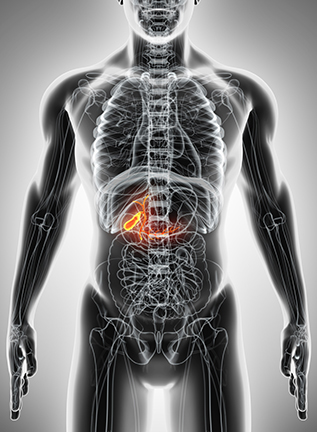
Predisposing risk factors include: being female, over age 60, American Indian or Mexican American descent, obesity, pregnancy, rapid weight loss, diet high in fat and/or cholesterol and low in fiber, family history of gallstones, sedentary lifestyle, diabetes, cholesterol-lowering medications (such as statins), hormone replacement medication, arid climate and dehydration.
From a OM perspective gallstones are considered gallbladder qi stagnation with phlegm-heat accumulation. Normal bile flow depends on the smooth flow of liver qi. When liver qi stagnates, bile flow becomes interrupted and erratic. Low levels of bile contribute to stone formation. Qi stagnation will eventually turn to heat and when combined with dampness from spleen qi deficiency, gallbladder damp-heat develop, complicating the condition. The presence of stones in the gallbladder that presents asymptomatically is generally defined as qi stagnation or shaoyang syndrome. An acute attack or recurrent attacks are generally associated with gallbladder damp-heat.
Herbal treatment strategies consist of two parts. First, to shrink and break apart the stones using stone-dissolving herbs. The second part is to expel the stones. There is an important caution when expelling stones: do not try to expel stones that are larger than 1cm in diameter. In the general acupuncture clinical setting, it is suggested not to induce expulsion of stones greater than 7mm to 8mm. If a stone gets stuck in the bile duct or the Oddi sphincter, emergency surgery is generally required. There is also a good chance of pain associated with biliary colic, fever, and jaundice, due to gallbladder stones temporarily blocking the duct, even when treatment is going well. A two to three month treatment protocol is usually required.
Lysimachia GB Formula (Xiao Chai Hu Jia Jin Qian Cao Pian) aids in dissolving the gallstones and promoting the movement of gallstones out through the intestines. This is done by clearing damp-heat in the gallbladder, and moving constrained gallbladder qi. For further aid in expelling stones, add in Major Rhubarb Combination (Da Cheng Qi Tang, KPC 0350) as an assistant formula. This formula will aid in the relaxation of the Oddi sphincter and promote the purgative effect of the stones. This formula is especially beneficial if heat is predominant over dampness.
Jaundice
Jaundice is defined as the yellowing of the skin, sclera, and mucous membranes resulting from excess bilirubin. The gallbladder is one of the primary organs associated with jaundice. There may also be spleen and liver involvement. The gallbladder may not always be the primary organ in jaundice, but many of the herbs that have been discussed in this paper are used for the varying treatments of jaundice and as such have been included. From a OM perspective, damp accumulation is always present in jaundice. There are two primary categories of jaundice: yang jaundice and yin jaundice. Yang jaundice is generally acute. It presents as bright yellow in color and is diagnosed as either damp-heat or toxic-heat. This can be further broken down by damp-predominant yang jaundice and heat-predominant yang jaundice. Yin jaundice is more chronic, presenting as a dull and darker yellow, and is usually due to a cold-damp or spleen deficiency.
In all yang jaundice patterns, eliminating damp is the primary treatment principle. Further pattern differentiation is key for correct treatment. In the treatment for yang jaundice, excess damp-heat stagnates and impairs the liver and gallbladder function, forcing the bile out to the superficial layers of the skin and eyes. For heat predominant damp-heat pattern, use the classical formula Capillaris Combination (Yin Chen Hao Tang, KPC 2500). This formula can be combined with Gentania Drain Fire Formula (Long Dan Xie Gan Tang) for severe heat. For damp predominant damp-heat pattern, use Capillaris and Poria Five Formula (Yin Chen Wu Ling San, KPC 2510). Because this pattern will often be seen with digestive problems, this formula supports the middle burner, addressing spleen function that is encumbered by excessive damp.
For yin jaundice: A weakness in spleen qi over time results in the spleen’s inability to transform damp, leading to a sallow, dull, and lusterless complexion; for spleen deficiency pattern use Astragalus Formula (Huang Qi Jian Zhong Tang). Cold-damp often arises and can be seen in conjunction with spleen deficiency. Clearing excess damp is still the primary treatment principle, but you must also warm and support the middle burner. For cold-damp pattern use Capillaris and Poria Five Formula (Yin Chen Wu Ling San, KPC 2510), plus Ginseng and Ginger Combination (Li Zhong Tang, KPC 2970), or for severe middle burner cold, use Aconite, Ginseng, and Ginger Combination (Fu Zi Li Zhong Tang, KPC 1760).
For jaundice due to gallstone obstruction, follow the appropriate treatment listed above to dissolve and dispel gallstones. Less commonly seen patterns in clinical practice include toxic-heat and blood stasis. Toxic heat is a severe damp-heat presentation usually seen in epidemics and liver failure. This is a yang-type jaundice. Treatment consists of combining Coptis Relieve Toxicity (Huang Lian Jie Du Pian) with Capillaris Combination (Yin Chen Hao Tang, KPC 2500) and Dandelion and Wild Chrysanthemum Combination (Wu Wei Xiao Du Yin, KPC 0740). The addition of Rehmannia Cool Blood Formula (Tu Fu Ling Sheng Di Huang Wan) may also be considered, if heat toxin has entered the blood level. Blood stasis is often seen in late stage liver disease and is usually a yin-type jaundice. An appropriate formula for treatment is Tangkuei and Corydalis Combination (Ge Xia Zhu Yu Tang, KPC 3830).


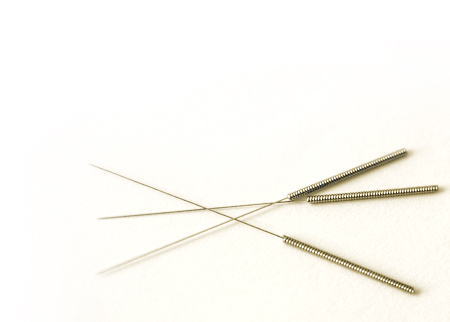
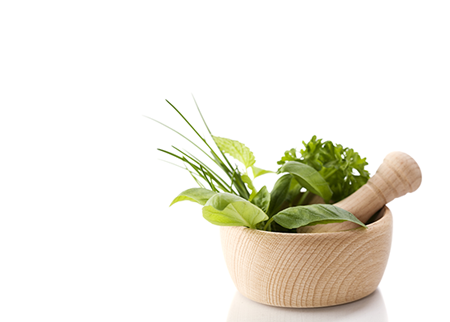
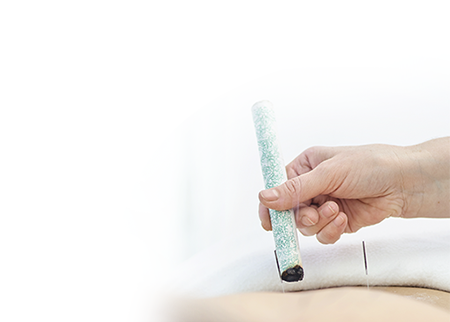
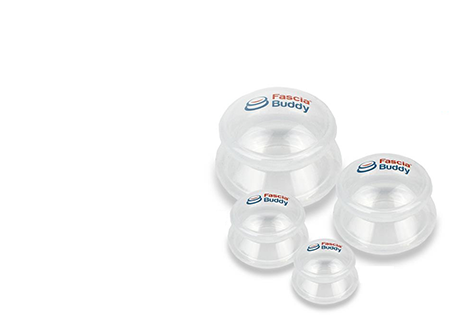

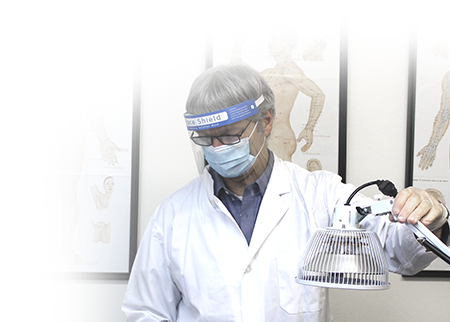
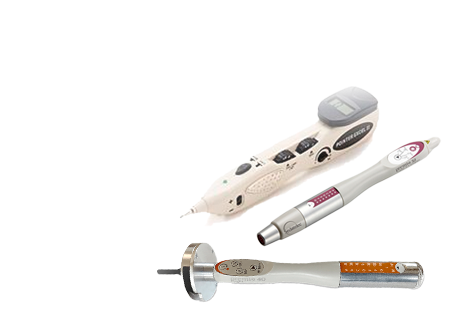

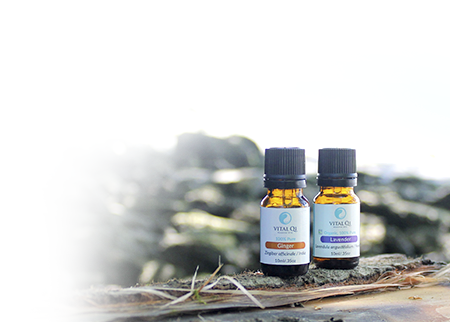


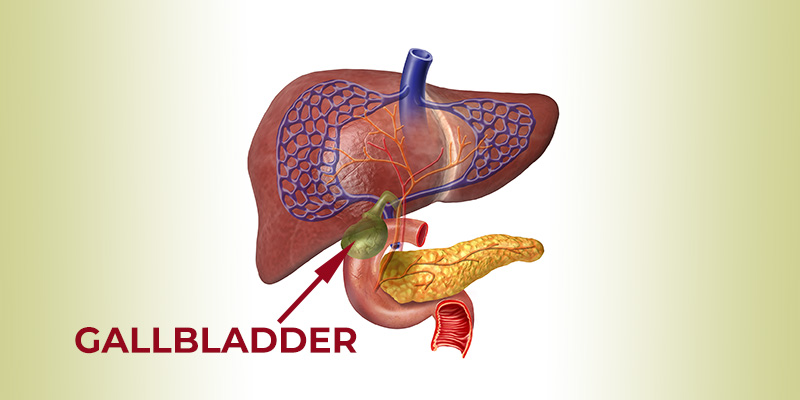
please explain the Gall Bladder symptom related to mental health. When someone “snap”. Is someone enraged, whose eyes blacken a GB issue?
Hi
Yes in Traditional Chinese Medicine the organ systems are multi-layered. These layers can include the physical organ, the functional system and other layers including emotions. Talk to a TCM practitioner to learn about how all these layers are interconnected with the other organ systems. The beauty of Traditional Chinese Medicine is that it is a systems approach to health where all aspects of an individual from environment, diet, constitution and internal emotional states are reviewed and considered. Thanks for reading our article.